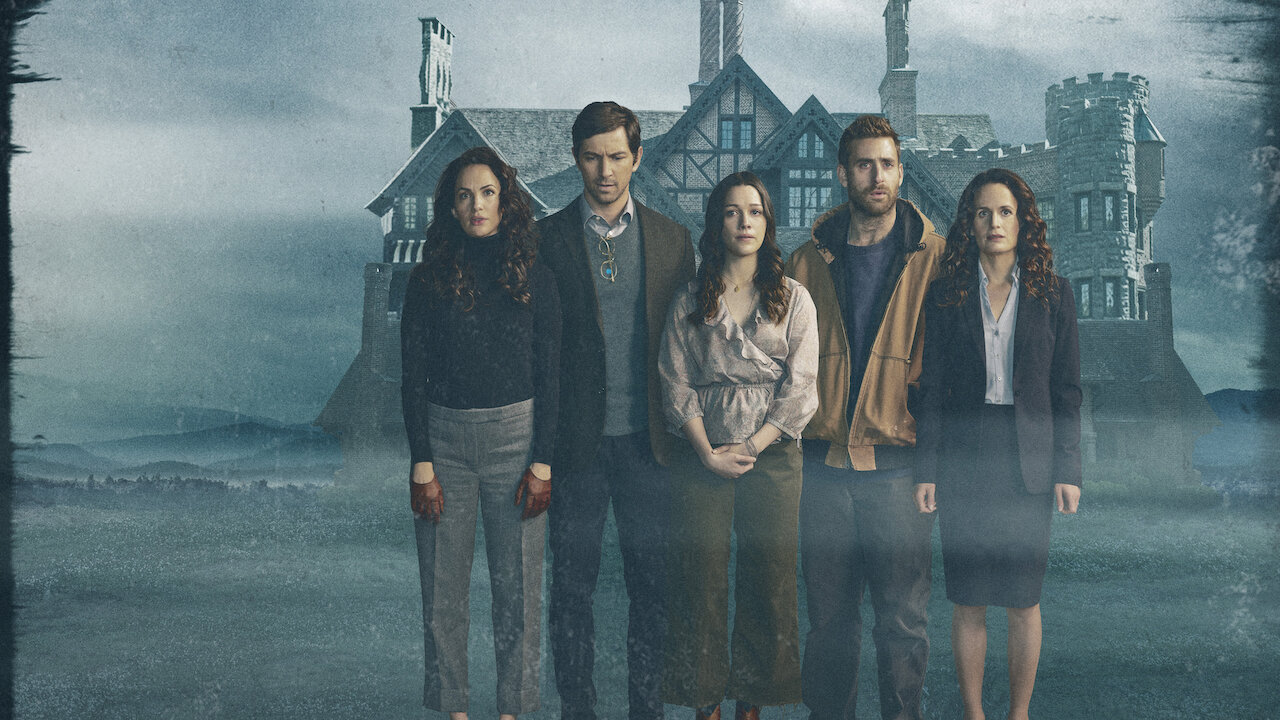!The Haunting of Hill House -spoilers ahead!
I’ve not been writing for a couple of weeks on the blog. I don’t know, I’ve signed up for an AA on Malikhaing Pagsulat sa Filipino in UP Diliman and still smarting from the rejection. But on Wednesday last week, I picked up The Haunting of Hill House -a Netflix series that I’ve put away for years and reserved for when I have headspace. I am semi-aware of the seminal book and its preceding reputation. I haven’t read it but know it will be tough for me. For one, I’m not a fan of horror, and two, it’s a bit of a heavy read.
As I’ve been told, the Netflix series The Haunting of Hill House takes significant creative liberties compared to Shirley Jackson’s 1959 novel of the same name. While the show retains some core themes and character archetypes from the book, the central plot and structure are quite different.
The biggest divergences are:
- The Netflix series is a multi-generational family drama centered around the Crain family, while the book focuses on a group of paranormal investigators.
- The show explores the long-term trauma and supernatural experiences of the Crain siblings, while the book is more focused on the descent into madness of the character Eleanor.
- The Netflix version has a more overt supernatural presence, with ghosts and jump scares, while the book leaves more ambiguity about what is real.
- The series fleshes out secondary characters more, but some argue it doesn’t connect to them as deeply as the book does with Eleanor.
A Heart-Wrenching Narrative
The first thing you got to understand about The Haunting of Hill House is that it’s an emotional family story. While it’s rooted in horror, the Netflix series, created by Mike Flanagan (of Midnight Mass fame), intricately weaves the trauma of the Crain family with supernatural elements.
From the very first episode, the series pulls you into the lives of the Crain family, exploring themes of grief, mental illness, and the scars of childhood. The show explores grief, mental illness, and the scars of childhood, making it resonate deeply with viewers and I literally spent half of the show sniffling.
The Crain Family
Olivia Crain (Carla Gugino)
- Matriarch of the Crain family and the architect of Hill House
- Struggles with mental illness and sees ghosts, which leads to her tragic demise
- Represents the haunting effects of trauma and the inability to escape the past
Hugh Crain (Henry Thomas/Timothy Hutton)
- Patriarch who tries to protect his family from the horrors of Hill House
- Haunted by the death of his wife and the loss of his children’s innocence
- Embodies the guilt and helplessness of a parent unable to shield their kids from harm
Steven Crain (Michiel Huisman/Paxton Singleton)
- The eldest Crain sibling, a published author who writes about Hill House
- Grapples with the trauma of his childhood and the guilt of leaving his family behind
- Represents the need to confront and process past experiences to move forward
Shirley Crain (Elizabeth Reaser/Lulu Wilson)
- The responsible eldest daughter who runs a funeral home with her husband
- Struggles with her own grief and the burden of caring for her family
- Symbolizes the weight of expectations and the desire for control in the face of chaos
Theodora “Theo” Crain (Kate Siegel/Mckenna Grace)
- The psychically gifted middle child with a troubled past
- Learns to embrace her abilities and confront her fears
- Represents the power of self-acceptance and the resilience of the human spirit
Luke Crain (Oliver Jackson-Cohen/Julian Hilliard)
- The troubled youngest son who battles drug addiction
- Seeks solace in the supernatural and finds strength in his family’s love
- Embodies the struggle with mental health and the redemptive power of connection
Eleanor “Nell” Crain (Victoria Pedretti)
- The youngest Crain sibling, haunted by the “Bent-Neck Lady” since childhood
- Grapples with the guilt of her mother’s death and her own mental health issues
- Represents the cyclical nature of trauma and the importance of breaking free from its grip
Character Depth and Intricacies
One of the most compelling aspects of the series is the character development. The standout performances from Carla Gugino as Olivia and Henry Thomas as Hugh bring authenticity to their roles as parents haunted by their past. The weight of the story is almost unbearable, especially in the heartbreaking moments leading to Hugh’s sacrifice. At first I saw it as giving up on his children but his decision to let go of his children so they can move on is so selfless that it’s impossible not to shed tears at this point. I cried so much on this part!
I also loved loved all the character’s monologues, particularly in the long, introspective speeches that reveal the characters’ inner struggles. For instance, Theo’s monologue in “Witness Marks” captures her journey through trauma and the importance of feeling connected to her family. Nell’s monologue, too, affected me deeply. When she said “Nobody could see me” I felt like it was a daily occurrence that happens to all of us and to think that a horror series can deliver this realization is an amazing moment for me.
Each character grapples with their demons, even the side characters such as Mr and Mrs Dudley, as well as poor Abigail, and the intricacies of their relationships highlight the themes of longing, love, and forgiveness. Abigail’s death is a classic example of tragic irony – the audience knows the Dudleys’ efforts to protect her will backfire, even if the characters don’t. So while Abigail is a relatively minor character, her arc serves as a microcosm for the show’s exploration of the themes of fate, hubris, and the tragic consequences of trying to outrun one’s destiny – all of which are common threads in mythology.
The Power of Love and Forgiveness
The series masterfully portrays the complexities of family dynamics, illustrating how love can be both a source of strength and pain. The Crain siblings—Steven, Shirley, Theo, Luke, and Nell—each navigate their own paths of healing, and Abigail’s storyline serves as a heartbreaking reminder of the fragility of life. Abigail’s death is particularly traumatic for Luke, as she was his childhood friend. The event is a catalyst for his struggles with guilt and trauma, as he represses memories of that night. When he later confronts the Red Room, he fails to acknowledge Abigail, indicating his deep-seated denial and the emotional scars left by her death. The emotional reunion and the bittersweet resolution for Luke and Abigail are moments of catharsis that leave viewers feeling a mix of sorrow and hope.
A New Take on Horror
I never would have thought that a horror story could evoke such profound emotions in me. The Haunting of Hill House redefines the genre by focusing on emotional depth alongside its chilling narrative. It’s a show that lingers in your mind long after the credits roll, prompting reflection on family, love, and the importance of facing one’s past. My daughter, who watched the show with me tells me that the series feels like she’s reading a book and I’m so happy that she reached that conclusion.
If you haven’t watched it yet and you’re a fan of both horror and drama, prepare yourself for a rollercoaster of emotions—you won’t regret it!

